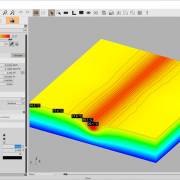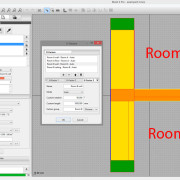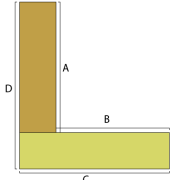We’re pleased to announce one of the biggest updates on our thermal simulation software! Please visit Mold Simulator and Frame Simulator pages for more information.
We’re pleased to announce the release of update 3.0.4 for Mold Simulator and Frame Simulator, our thermal bridge analysis and window transmittance computation softwares. Please go to their respective pages to get the latest viewer version.
Here you are the list of changes:
– fRsi sample label;
– segment opacity;
– ability to select vertices by one or more material names;
– lambda value on library materials’ name;
– .csv files importing improvement;
– continuous facade Utj – PSIj computation;
– boundary library access from Bridge Generator;
– psi contributions separation when using three boundary conditions;
– various bug fixes.
We’ve just released update 3.0.2 for Mold Simulator and Frame Simulator, our thermal bridge analysis and window transmittance computation softwares. Please go to their respective pages to get the latest viewer version.
Thanks to U-factors feature of Mold Simulator 3, it is possible to compute the contribution of every room to global psi value of a thermal bridge. In this tutorial we’ll refer to file example13.mos contained in Mold Simulator’s documentation folder.
Suppose you’ve a T type of thermal bridge:

It is very important to create two different section elements (“Top element” and “Bottom element”) to get correct results.
We want to use four different boundary conditions for the internal environments; for this reason you must pay particular attention to boundaries setup.
1- Every internal boundary must have the same temperature;
2- Grouping must be by temperature, but you must disable “Just connected boundaries” option;
3- A separate U-factor surface must be associated to each boundary;
4- U-factors of room A must be grouped under “Room A” U-factors group (same for U-factors of room B).

Now you’re ready to get separate linear thermal transmittance contributions of this thermal bridge simply passing to simulation tab.
In many thermal bridge computations, you can choose the reference point against which to calculate the linear thermal transmittance (psi). The most common example is the edge of a building:
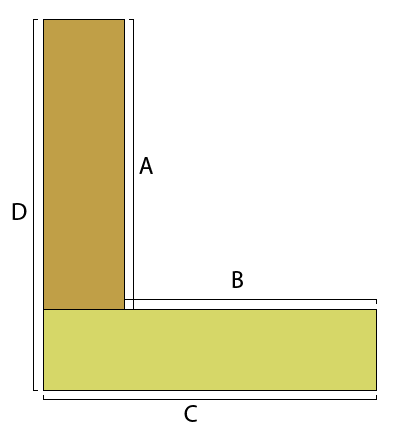
It is possible to calculate psi compared to the internal reference point (lengths A and B) or outside (C and D). Thanks to Mold Simulator 3’s new features, you can do both with a single project following these simple steps:
1- plot the section elements to identify lengths C and D of the thermal bridge:
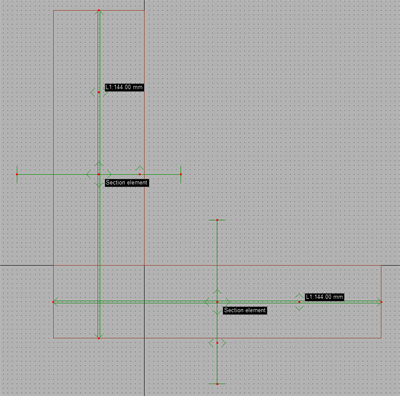
2- change the properties of the newly created items by enabling the “double-length” option. Some new lines will appear for each item;
3- adapt to the new lines in order to identify the lengths A and B:
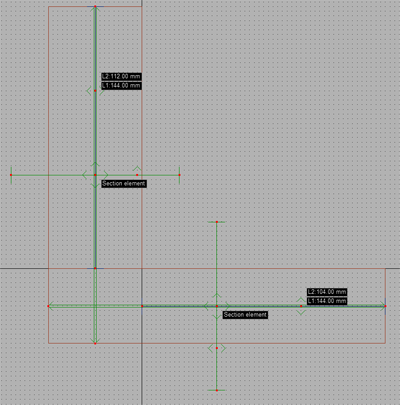
Turning to “Simulation” tab, you will notice two distinct values of thermal bridge’s linear thermal transmittance (psi): one refers to the internal reference point and the other one to the outside point. For more information, please go to Mold Simulator page.
After two years from the release of Mold Simulator 2, we’re extremely pleased to announce Mold Simulator 3. Aside the huge list of improvements and new features, we’ve added a new version of the software: Mold PSI!, specifically designed for linear thermal transmittance computation. For more information please go to Mold Simulator page.
We’re pleased to announce the release of update 2.1.7 for both Frame Simulator, our window transmittance simulator, and Mold Simulator, our thermal bridge software. This is a maintainance release, with a some bug fixes. You can get the latest viewer versions here:
Frame Simulator | Windows Transmittance
Mold Simulator | Thermal Bridges
Mold Simulator has been updated to version 2.1.6; this time we’ve solved several bugs and improved Mac OSX compatibility. For more information please go to Mold Simulator | Thermal Bridges page.
Our thermal bridge simulator, Mold Simulator 2.1.3, is out with a bunch of changes and bug fixes:
- volumetric mass and specific heat can be temperature-dependant (Dynamic);
- X-Y curve factors for humidity (Dynamic);
- GUI improvements on Mac OSX version;
- various bug fixes.
Mold Simulator is available for Windows and Mac OSX; the new viewer version can be downloaded from thermal bridge page.
We’re very pleased to announce that Mold Simulator, our thermal bridge simulator (for Windows and Mac OSX) 2.0.9 is out. Here you are what’s new:
- settings file can be saved to a custom folder;
- conditional labels;
- improved printed viewports;
- import/export more than one texture a time;
- views window minimized at run time;
- various bug fixes.
The new viewer can be downloaded at Mold Simulator | Thermal Bridge.

